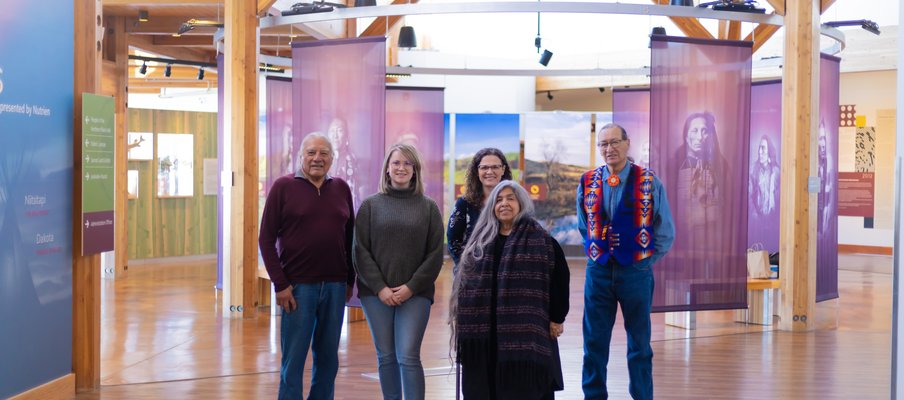Strengthening support for repatriation: MAS builds relationships and capacity in repatriation work

Understanding that authentic, trust-based relationships are at the heart of meaningful repatriation, the Museums Association of Saskatchewan (MAS) is working to remove long-standing barriers to repatriation in the province. Guided by the knowledge of Elders and Knowledge Keepers, MAS is moving forward at the “pace of trust”, prioritizing respect, collaboration, and Reconciliation every step of the way.
Emma Morris, executive director, MAS, says forming the Elders Circle was key to moving forward. “We’re trying to inform and educate and do this in a good way. As the Elders have told me again and again, ‘We move at the pace of trust,’” she adds. “Not every Rights Holder is going to be immediately ready to take these cultural belongings back, and that’s up to each museum to navigate that. But the important piece is that museums need to be ready to respond to what Rights Holders need.”
Forming the Elders Circle to seek advice was one of the first steps MAS took toward building resources to help its members learn how to approach repatriation. Sitting in the Circle currently are Knowledge Keeper Dr. Linda Young, Cy Standing and Sid Fiddler. “Having that high-level guidance from Elders and Knowledge Keepers has been so necessary for this work,” Morris says.
Knowledge Keeper Dr. Linda Young agrees. “Inviting Elders and Knowledge Keepers who can provide guidance by sharing their collective knowledge gleaned from lived experience, oral history and ceremony honours First Nations and Métis traditions when handling sacred objects,” she says. “For me, the pace is a reference to protocol, the offering of tobacco when seeking knowledge, and trust from both parties emerges from this process.”
Other steps MAS has taken over the past two years included hiring Gabriel Essaunce Lamarche in the new role of repatriation and community liaison this past September, as well as establishing online educational resources for repatriation, developing a database to house all of the materials that should be repatriated, and creating a film on the process and power of repatriation, entitled Finders Keepers: In the Spirit of Repatriation, which was launched in May 2025.
“My role includes helping museums develop repatriation policies, to identifying artifacts and connecting with communities,” says Essaunce Lamarche. “From my upbringing as a member of Beausoleil First Nation in Ontario, I understand the protocols around caring for these items. It’s really important that museums do build a good ongoing relationship with nearby Indigenous communities to ensure the items are handled with respect.”
With an understanding of the history of colonialism, he approaches his work with respect for each community’s perspective on how items should be repatriated. “Previously, there was a provision in the Indian Act that expressly prohibited traditional ceremonial practices, so a lot of traditional ceremonies had to go underground and be kept secret to keep them alive between about 1890 and 1950,” he explains. “Because of this, there is still a hesitancy in a lot of Indigenous communities to share the traditional knowledge they carry. It’s important for me and for museums to be open and create a safe space where communities feel comfortable coming forward.”
Some of Essaunce Lamarche’s priorities moving forward are to “get sacred ceremonial items that are in museums back under the care and authority of Indigenous Elders,” he says. “The next highest priority is dealing with archeological materials. There needs to be more Indigenous input in how these items are displayed and the interpretive story we tell about the past through these items, to frame it in a much more respectful way.”
A lot of repatriation has already happened quietly across the province without media coverage, says Morris. “It’s private and based in ceremony in some cases, and so it’s not something that can be shared, but witnessing that and being a part of that is so powerful."

